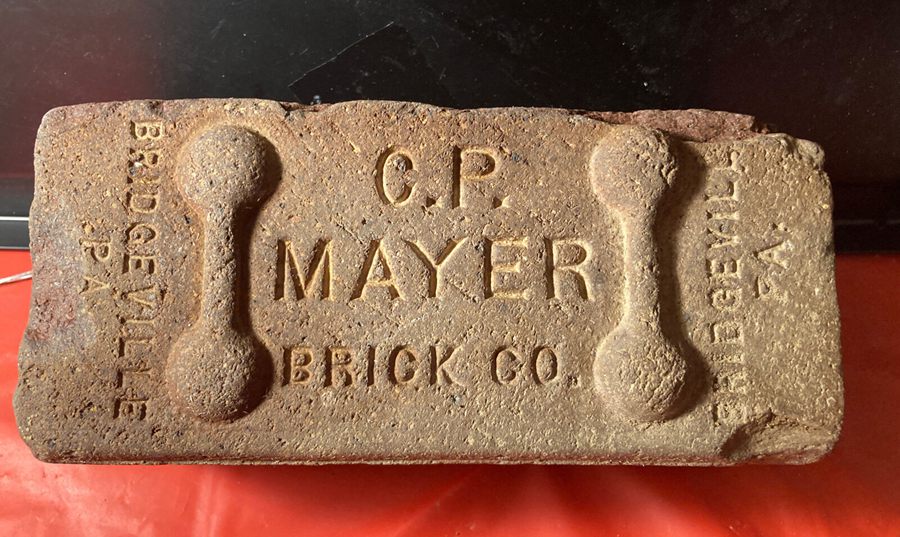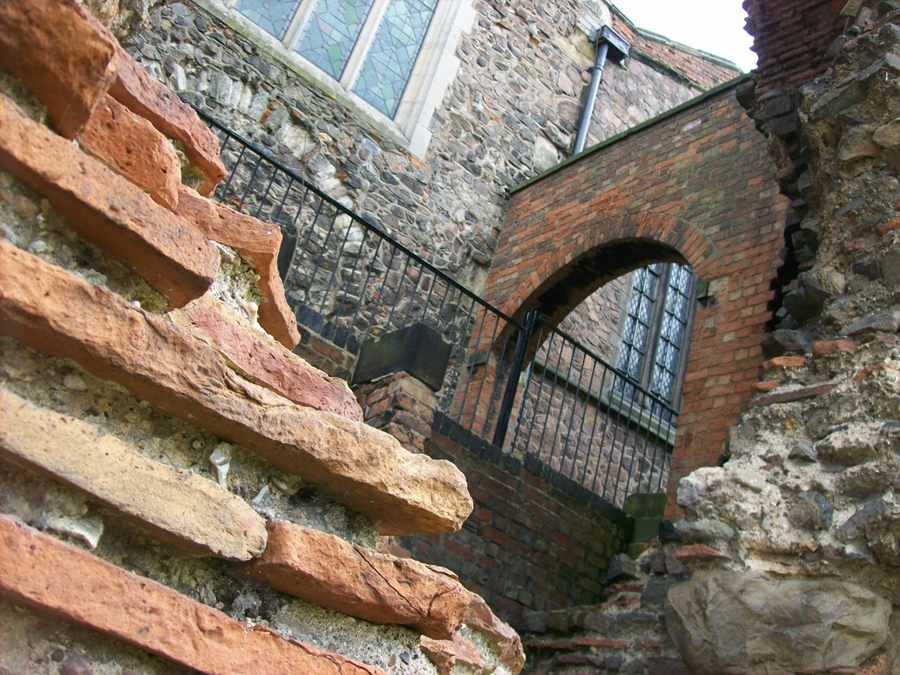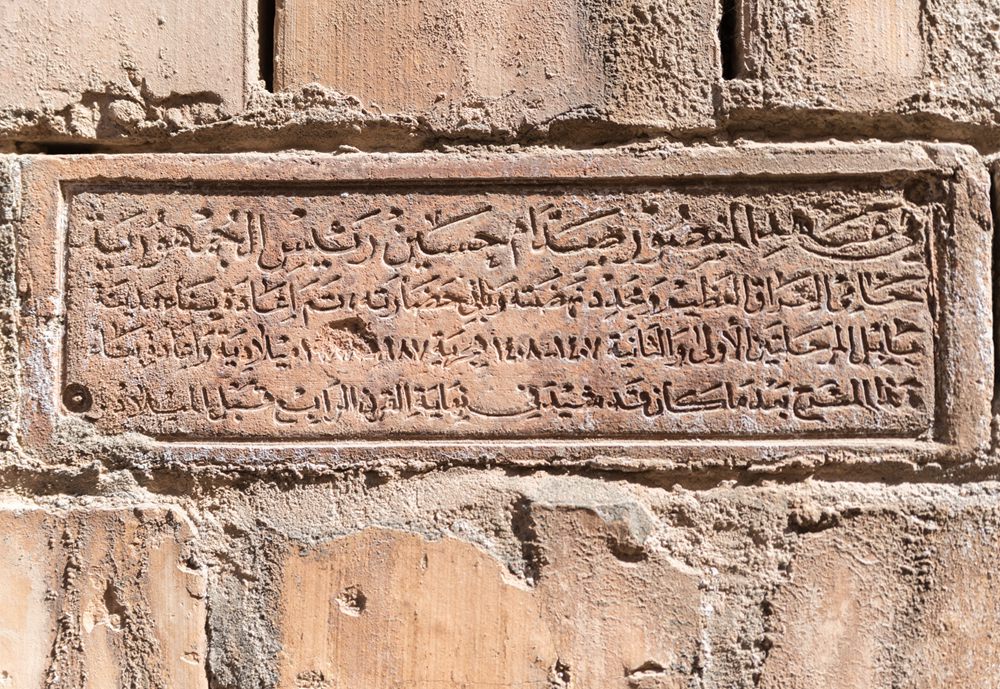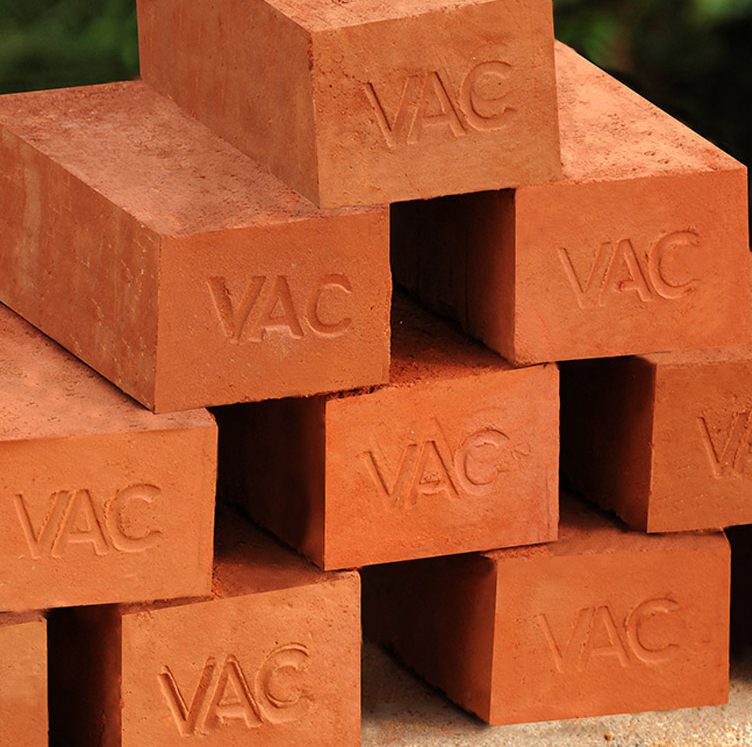If you’re a fan of vintage architecture or just love the look of antique brick, you may be interested in identifying and valuing these unique building materials. Antique bricks can range in color, size, and shape, so it’s important to know what to look for when identifying them. In addition, understanding the value of antique bricks can help you make informed decisions when buying or selling them.
One of the first things to consider when identifying antique bricks is their color. There are hundreds of shades, from deep reds to pale yellows, and each can give clues about the brick’s age and origin. Another important factor is the materials used in the brick’s construction. Hand-shaped bricks were common in the past and often contain straw, while machine-made bricks are more uniform and may contain different materials like sand, cement, and water. Understanding these characteristics can help you narrow down the age and value of your antique bricks.
Overall, antique bricks are a fascinating piece of architectural history that can add character and charm to any building project. Whether you’re a collector, builder, or just a fan of vintage design, learning to identify and value antique bricks can help you appreciate their unique beauty and history.
Table of Contents
What is Antique Brick?
Antique bricks are a type of brick that has been used for construction for centuries. They are known for their unique appearance, texture, and durability. Antique bricks are typically larger than modern bricks, measuring about 8 x 4 inches. They have prism-like lips, moldings, and a coarse texture that comes from natural additives like bone, straw, and lime.
One of the defining features of antique bricks is their age. These bricks have been around for a long time, and many of them have historical significance. They were used to build some of the oldest and most enduring man-made structures in the world. Antique bricks are often used in restoration projects to maintain the historical integrity of a building.
Antique bricks can be identified by their date stamps and logos. Some antique bricks are stamped with the year they were made, while others have the name of the manufacturer or the location where they were made. If you are unsure about the age of your antique bricks, you can also check their firing. Sun-dried bricks are typically older than kiln-fired bricks.
Antique bricks are highly valued by collectors and builders alike. They are often used in high-end construction projects and can add a unique and historic touch to any building. If you are interested in using antique bricks in your next project, it is important to do your research and find a reputable supplier. With the right care and maintenance, antique bricks can last for centuries and continue to add value to your property.
How to Tell if Brick is Antique or Old
If you’re interested in antique bricks, it’s important to know how to determine their age. Here are some tips to help you identify whether a brick is antique or old:
Look for irregularities in shape: Antique bricks were often formed by hand, so they may not be perfectly uniform in shape. Look for bricks that are slightly uneven or have irregular edges. They may also contain straw or other organic material.
Check for date stamps or logos: Some antique bricks may have date stamps or logos that can help you determine their age. Look for these markings on the surface of the brick.
Examine the firing: Antique bricks were often sun-dried, which can result in a slightly different color and texture than bricks that were fired in a kiln. If the brick appears to have been fired, look for signs of warping or cracking that can indicate age.
Consider the materials used: The value of antique bricks can depend on the materials used in their construction. Look for handmade clay, straw, or gravel bricks, which may be more valuable than machine-made bricks.
Check for reclaimed or branded bricks: Some antique bricks may be reclaimed from old buildings, while others may be branded with the name of the manufacturer. These can add to the value of the brick.
It’s important to note that not all old bricks are necessarily antique, and not all antique bricks are valuable. Use these tips to help determine the age and potential value of the bricks you’re interested in.
6 Types of Antique Brick and Their Values
When it comes to antique bricks, there are six main types that you should be aware of. Each type has its own unique characteristics, and these can affect the value of the brick. Here are the six types of antique brick and what you need to know about them:
Handmade Bricks

Handmade bricks are exactly what they sound like – bricks that were made by hand. They are typically irregular in shape and size, and they may have fingerprints or other marks from the person who made them. Handmade bricks are often quite valuable, especially if they are in good condition and have an interesting history.
Wire-Cut Bricks
Wire-cut bricks are made by cutting clay into the desired shape using a wire. They are generally more uniform in shape than handmade bricks, and they can be very smooth and even. Wire-cut bricks are often used for decorative purposes, and they can be quite valuable if they are in good condition.
Soft-Mud Bricks
Soft-mud bricks are made by molding wet clay into the desired shape. They are typically less uniform in shape than wire-cut bricks, and they may have a rougher texture. Soft-mud bricks are often used for industrial purposes, and they may not be as valuable as some other types of antique brick.
Dry-Pressed Bricks
Dry-pressed bricks are made by pressing dry clay into the desired shape. They are typically very uniform in shape and size, and they can be quite smooth. Dry-pressed bricks are often used for construction purposes, and they can be quite valuable if they are in good condition.
Firebricks
Firebricks are specially designed bricks that are used in high-temperature applications, such as in furnaces or kilns. They are typically made from a special type of clay that can withstand extreme heat. Firebricks can be quite valuable, especially if they have an interesting history.
Roman Bricks

Roman bricks are a type of brick that was used in ancient Rome. They are typically smaller and thinner than modern bricks, and they may have a slightly curved shape. Roman bricks can be quite valuable, especially if they are in good condition and have an interesting history.
Overall, the value of an antique brick depends on a variety of factors, including its age, condition, and rarity. By understanding the different types of antique brick, you can better appreciate their unique characteristics and value.
10 Factors to Identify & Value Antique Brick
1. Age
The age of an antique brick is a crucial factor in determining its value. Older bricks are generally more valuable than newer ones, as they are rarer and often have more character and history. The age of a brick can be determined by examining its size, shape, and markings.
Handmade bricks, which were commonly used prior to the 19th century, are generally larger and have irregular shapes and markings. Machine-made bricks, which became more common in the 1800s, are smaller and have more uniform shapes and markings.
When appraising the value of an antique brick, the age of the brick is often taken into consideration. The older the brick, the more valuable it is likely to be. However, other factors such as the condition of the brick and its rarity can also affect its value.
Below is a valuation table for antique bricks based on their age:
Antique Brick Age Valuation Pre-1800s $5 – $15 per brick 1800s $2 – $5 per brick 1900s $1 – $3 per brick
It is important to note that these valuations are based on the average prices of antique bricks and may vary depending on the condition, rarity, and other factors.
2. Brands
The brand of antique bricks can have a significant impact on their value. Some of the most popular brands include:
- Old Carolina Brick Company: Known for producing high-quality handmade bricks with unique textures and colors. These bricks are highly sought after by collectors and can command a premium price.
- Redland Brick: A well-known brand that has been producing bricks for over 120 years. Their bricks are known for their durability and come in a variety of colors and textures.
- Glen-Gery Brick: Another popular brand that offers a wide range of colors, textures, and shapes. Their bricks are often used in historic restoration projects and can command a premium price.
- Belden Brick Company: Known for producing high-quality bricks that are made to last. Their bricks come in a variety of colors and textures and are often used in commercial and residential construction projects.
When appraising antique bricks, the brand can be an important factor to consider. Certain brands may be more desirable than others, which can impact their overall value.
To give you an idea of how brand can impact the value of antique bricks, the table below shows average valuations for different brands of antique bricks:
| Brand | Average Valuation |
|---|---|
| Old Carolina Brick Company | $5 – $7 per brick |
| Redland Brick | $3 – $5 per brick |
| Glen-Gery Brick | $4 – $6 per brick |
| Belden Brick Company | $3 – $5 per brick |
3. Markings
When identifying antique bricks, markings can be an important factor in determining their value. These markings can include manufacturer stamps, date stamps, and other unique identifiers. The presence of these markings can also help to determine the age of the brick.
Manufacturer stamps can provide valuable information about the brick’s origin. Some manufacturers, such as the famous H. B. Smith Brick Company, were known for producing high-quality bricks that are highly sought after by collectors. Other manufacturers may have had a more regional appeal, and their bricks may only be valuable to collectors in certain areas.
Date stamps can also be important when appraising antique bricks. Bricks from certain time periods may be more valuable than others, and the presence of a date stamp can help to narrow down the time frame in which the brick was produced. However, it is important to note that not all antique bricks will have a date stamp, and the absence of one does not necessarily mean that the brick is not valuable.
4. Materials
The materials used to make antique bricks can greatly impact their value and appraisal. The most common materials used to make antique bricks include clay, sand, and lime. The type of clay used can vary greatly, and some types of clay are more desirable than others. For example, bricks made from high-quality kaolin clay can be worth more than bricks made from lower-quality clay.
The color of the brick can also be affected by the materials used. Bricks made from red clay are often more valuable than those made from other colors of clay. The color can also vary based on the firing process used during production.
Another factor that can impact the value of antique bricks is the size and shape of the brick. Different shapes and sizes were used for different purposes, and some are more rare and desirable than others. As an example, a uniform cube with four straight sides can be worth between $500-$600, while a stepped anvil shape is valued at $70-$80.
Overall, the materials used to make antique bricks can greatly affect their value and appraisal. It is important to consider the type of clay used, the color, and the size and shape of the brick when determining its worth.
| Antique Brick Material | Average Valuation |
|---|---|
| High-quality kaolin clay | $500-$600 |
| Red clay | $450-$500 |
| Other colors of clay | $100-$120 |
| Lime | $100-$150 |
| Sand | $300-$350 |
5. Size
The size of antique bricks is an important factor that affects their value and appraisal. Generally, antique bricks are larger than modern bricks and can vary in size by more than an inch in any direction. They are typically about 8 x 4 inches with prism-like lips, moldings, and coarse texture.
One way to determine the age and value of antique bricks is to examine their size. If the bricks are larger than modern bricks, it is an indication that they are old and may be more valuable. However, the size of the bricks alone is not enough to determine their value. Other factors such as the manufacturer, date stamp, and firing method also play a role in determining the value of antique bricks.
6. Shape
The shape of antique bricks is an important factor that affects their value and appraisal. Antique bricks come in various shapes, and each shape has its unique characteristics that determine its worth. The following table shows the average valuation for different antique brick shapes:
| Antique Brick Shape | Average Valuation |
|---|---|
| Uniform Cube, 4-straight sides | $500 – 600 |
| Rounded Rectangle with One Horn | $450 – 500 |
| Rounded Rectangle with Two Horns | $500 – 600 |
| Cylindrical, Half-Round | $300 – 350 |
| Pyramid, Triangular | $100 – 120 |
| Tear Drop Anvil | $100 – 150 |
| Stepped Anvil | $70 – 80 |
As you can see, the uniform cube with four straight sides is the most valuable antique brick shape, with an average valuation of $500 – 600. On the other hand, the stepped anvil is the least valuable, with an average valuation of $70 – 80.
The shape of antique bricks is significant because it affects their functionality. For instance, bricks with rounded edges are more likely to crumble and break than those with straight edges. This makes bricks with straight edges more valuable than those with rounded edges.
In addition to functionality, the shape of antique bricks can also affect their aesthetic appeal. Some shapes, such as the pyramid and tear drop anvil, are more visually appealing and unique than others, making them more valuable to collectors.
In conclusion, the shape of antique bricks is an important factor that affects their value and appraisal. The table provided above can give you an idea of the average valuation for different antique brick shapes. Keep in mind that other factors, such as age, color, and material, can also impact the value of antique bricks.
7. Colors
The color of antique bricks is a significant factor in determining their value and appraisal. Antique bricks come in a wide range of colors, including red, white, tan, brown, orange, gray, and black. Each color has its unique characteristics that impact the value of the brick.
Red bricks are the most common and popular color for antique bricks. They are considered a classic color and are highly sought after by collectors. The value of red bricks is determined by their shade, with darker shades being more valuable.
White bricks are another popular color for antique bricks. They are often used for decorative purposes and can be more valuable than red bricks. The value of white bricks is determined by their purity and rarity.
Tan and brown bricks are also popular colors for antique bricks. They are often used for architectural purposes and can be more valuable than red bricks. The value of tan and brown bricks is determined by their shade, with darker shades being more valuable.
Orange and gray bricks are less common but can still be valuable. Orange bricks are often used for decorative purposes, while gray bricks are often used for industrial purposes. The value of orange and gray bricks is determined by their rarity and condition.
Black bricks are the rarest and most valuable color for antique bricks. They are often used for decorative purposes and can be very expensive. The value of black bricks is determined by their rarity and condition.
The following table shows the average valuation of antique bricks based on their color:
| Brick Color | Average Valuation |
|---|---|
| Red | $5 – $10 per brick |
| White | $10 – $15 per brick |
| Tan/Brown | $7 – $12 per brick |
| Orange/Gray | $10 – $20 per brick |
| Black | $20 – $50 per brick |
It is important to note that the valuation of antique bricks can vary depending on other factors such as size, shape, and condition. However, the color of the brick remains one of the most significant factors in determining its value and appraisal.
Final Thoughts
In conclusion, antique bricks can be a valuable addition to any collection. They have a rich history and can add character and charm to any home or building. Here are a few key takeaways to keep in mind:
- The value of antique bricks can vary greatly depending on factors such as rarity, condition, and historical significance.
- It is important to properly identify antique bricks to ensure their value and authenticity.
- Reclaimed antique bricks can also be a great option for those looking to add a vintage touch to their home or building.
- When purchasing antique bricks, be sure to do your research and buy from reputable sellers.
Overall, antique bricks are a unique and fascinating piece of history that can be appreciated for years to come. Whether you are a collector or simply looking to add some character to your home, antique bricks are a great choice.
FAQ
If you’re interested in antique bricks, you may have some questions about identifying and valuing them. Here are some frequently asked questions to help you get started.
How can I tell if a brick is antique?
Antique bricks often have identifying marks such as a maker’s mark or a special engraving. You can also look at the brick’s color and texture. Antique bricks tend to be a much darker shade than modern bricks, and they may have irregularities in shape due to being formed by hand. They may also contain natural additives like bone, straw, and lime, which give them a unique texture.
How do I identify the manufacturer of an antique brick?
One way to identify the manufacturer of an antique brick is to look for a stamp or logo on the brick itself. You can also consult a reference book or online database of antique brick manufacturers. If you’re still unsure, you can have the brick analyzed by a professional to determine its composition and age.
How do I determine the value of an antique brick?
The value of an antique brick depends on several factors, including its age, rarity, condition, and historical significance. You can consult a price guide or appraisal service to get an idea of its value, but keep in mind that the market for antique bricks can be unpredictable. The value of a particular brick may also vary depending on the region and the demand for that particular type of brick.
Can I use antique bricks in my construction project?
Yes, antique bricks can be used in construction projects, but it’s important to make sure they are structurally sound and meet modern building codes. You may also need to obtain a permit or approval from your local government or historic preservation organization. Reclaimed bricks can add character and charm to your project, but they may also require additional maintenance and upkeep compared to modern materials.
Where can I find antique bricks for sale?
Antique bricks can be found at salvage yards, architectural salvage stores, and online marketplaces. Be sure to do your research and only buy from reputable sources to ensure that you’re getting authentic antique bricks. You may also want to consider the cost of shipping and handling, as antique bricks can be heavy and fragile.










